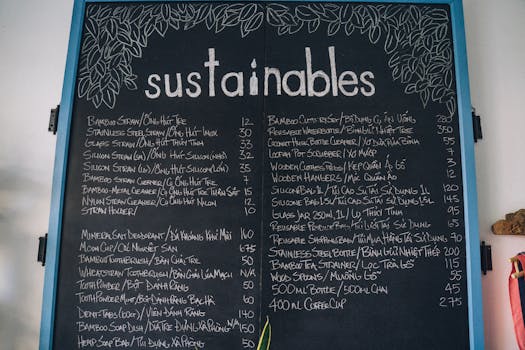
Sustainable Living: Emerging Trends for 2025
Sustainable living is becoming increasingly important as we face the challenges of climate change, environmental degradation, and resource depletion. As we move into 2025, there are several emerging trends that are expected to shape the future of sustainable living. Sustainable living is not just a buzzword, but a way of life that requires a conscious effort to reduce our impact on the environment.
Section 1: Renewable Energy

One of the most significant trends in sustainable living is the shift towards renewable energy sources. Solar and wind power are becoming increasingly cost-competitive with fossil fuels, making them a viable option for households and businesses. In fact, renewable energy is expected to account for 60% of the world’s power generation by 2050.
Another emerging trend is the use of energy storage systems, such as batteries, to store excess energy generated from renewable sources. This allows households and businesses to use renewable energy even when the sun is not shining or the wind is not blowing.
Section 2: Zero Waste

Zero waste is another trend that is gaining momentum in the sustainable living community. The goal of zero waste is to eliminate waste altogether by adopting a circular economy approach. This involves designing products and systems that are restorative and regenerative by design.
One way to achieve zero waste is through the use of composting and recycling. Composting food waste and yard trimmings can reduce the amount of waste sent to landfills and create a nutrient-rich soil amendment. Recycling, on the other hand, can help to conserve natural resources and reduce the amount of waste generated.
Section 3: Sustainable Transportation

Sustainable transportation is another area where there are several emerging trends. Electric vehicles are becoming increasingly popular, with many countries investing heavily in EV infrastructure. In fact, electric vehicles are expected to reach price parity with gas-powered cars by 2025.
Another trend is the use of alternative modes of transportation, such as cycling and walking. Many cities are investing in bike-friendly infrastructure, such as bike lanes and bike-share systems, to encourage people to cycle instead of drive.
Section 4: Sustainable Food Systems

Sustainable food systems are critical to ensuring food security and reducing the environmental impact of agriculture. One trend is the use of regenerative agriculture practices, such as permaculture and biodynamics, which prioritize soil health and biodiversity.
Another trend is the use of vertical farming and urban agriculture to increase food production in urban areas. This can help to reduce transportation costs and increase access to fresh, locally grown produce.
Section 5: Sustainable Living in the Home

Sustainable living is not just about grand gestures, but also about making small changes in our daily lives. One way to start is by making our homes more sustainable. This can involve using energy-efficient appliances, insulating our homes, and using sustainable building materials.
Another way to live more sustainably is by reducing our water usage. This can involve installing low-flow showerheads and toilets, as well as harvesting rainwater for non-potable uses.





